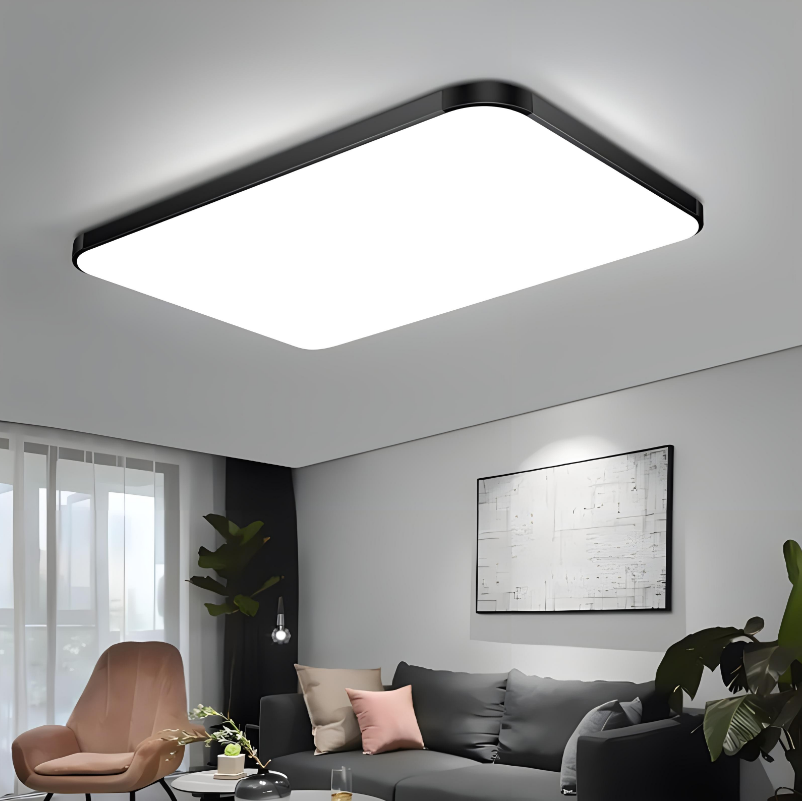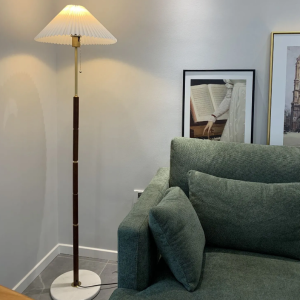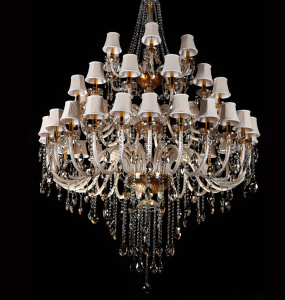
Shedding Light on Modern Design: The Beauty of Pendant Lamps
Modern design is a style that emerged in the early 20th century and is characterized by clean lines, minimalism, and functionality. It is a departure from the ornate and elaborate styles of the past, focusing instead on simplicity and practicality. Pendant lamps, also known as hanging lamps or drop lights, have become increasingly popular in modern design due to their versatility and aesthetic appeal.
Pendant lamps are fixtures that hang from the ceiling and provide both functional and decorative lighting. They come in a variety of styles, shapes, and sizes, allowing them to be used in various spaces and settings. Whether it’s a sleek and minimalist pendant lamp in a contemporary living room or a bold and colorful one in a bohemian-inspired bedroom, pendant lamps can add a touch of style and sophistication to any space.
The Versatility of Pendant Lamps in Modern Design
One of the reasons why pendant lamps have become so popular in modern design is their versatility. They can be used in a wide range of spaces, from residential homes to commercial establishments. Pendant lamps can be hung over dining tables, kitchen islands, bedside tables, or even in entryways to create a focal point and provide ambient lighting.
In terms of style, pendant lamps can be found in various designs to suit different aesthetics. For those who prefer a minimalist look, there are pendant lamps with clean lines and simple shapes. On the other hand, those who prefer a more eclectic style can opt for pendant lamps with unique and eye-catching designs. The versatility of pendant lamps allows them to seamlessly blend into any interior design style, whether it’s modern, industrial, Scandinavian, or bohemian.
The Evolution of Pendant Lamps in Modern Design
Pendant lamps have a long history that dates back centuries. In the past, they were primarily used for functional purposes, such as providing light in large spaces like churches and palaces. However, as modern design emerged, pendant lamps began to evolve and take on a more decorative role.
In the early 20th century, pendant lamps started to incorporate new materials and designs. Art Nouveau and Art Deco styles influenced pendant lamp design, resulting in more ornate and elaborate fixtures. As the mid-century modern movement gained popularity in the 1950s and 1960s, pendant lamps became more streamlined and minimalist in design.
Today, pendant lamps continue to evolve with advancements in technology and design. LED lighting has allowed for more energy-efficient and versatile pendant lamps, while 3D printing has opened up new possibilities for unique and customizable designs. The evolution of pendant lamps in modern design reflects the changing tastes and preferences of society.
The Aesthetics of Pendant Lamps in Modern Design
One of the key reasons why pendant lamps ninelighting are so popular in modern design is their aesthetic appeal. Pendant lamps can serve as a statement piece or a subtle addition to a space, depending on their design and placement. They can add visual interest, texture, and depth to a room, enhancing its overall aesthetic.
Pendant lamps come in a wide range of styles and shapes, allowing them to complement any interior design style. From sleek and minimalist designs to bold and colorful ones, there is a pendant lamp for every taste and preference. The choice of materials, such as glass, metal, or fabric, also contributes to the overall aesthetic of the pendant lamp.
The shape of a pendant lamp can also have a significant impact on its aesthetic appeal. Whether it’s a classic dome-shaped pendant lamp or a geometrically inspired one, the shape can create visual interest and add a unique touch to a space. Pendant lamps with intricate patterns or textures can also create a focal point and become a conversation starter.
The Functionality of Pendant Lamps in Modern Design
While pendant lamps are undoubtedly aesthetically pleasing, they also serve a practical purpose in modern design. They provide both task lighting and ambient lighting, making them a versatile lighting solution for any space.
Pendant lamps can be used to provide focused lighting for specific tasks, such as reading or cooking. When hung over a kitchen island or a dining table, pendant lamps can illuminate the area and create a well-lit workspace. The height at which the pendant lamp is hung can also be adjusted to ensure optimal lighting for the task at hand.
In addition to task lighting, pendant lamps also provide ambient lighting. When hung in a living room or bedroom, pendant lamps can create a warm and inviting atmosphere. They can be used to set the mood and create a cozy ambiance, especially when paired with a dimmer switch.
The Materials Used in Modern Pendant Lamp Design

Pendant lamps are made from a variety of materials, each with its own unique characteristics and aesthetic appeal. The choice of material can greatly impact the overall look and feel of the pendant lamp.
Glass is a popular material for pendant lamps as it allows for the diffusion of light and creates a soft and warm glow. Clear glass pendant lamps can add a touch of elegance and sophistication to a space, while colored glass pendant lamps can create a more playful and vibrant atmosphere.
Metal is another commonly used material for pendant lamps. It is durable and versatile, allowing for a wide range of designs and finishes. Metal pendant lamps can have a sleek and modern look or a more industrial and rustic feel, depending on the finish and style.
Fabric is also used in pendant lamp design, particularly for shades or diffusers. Fabric shades can soften the light emitted by the pendant lamp and create a cozy and inviting atmosphere. They come in various colors and patterns, allowing for customization and personalization.
The Importance of Lighting in Modern Design
Lighting plays a crucial role in modern design as it can greatly impact the mood and atmosphere of a space. It can highlight architectural features, create focal points, and enhance the overall aesthetic of a room.
In modern design, lighting is often used to create a sense of balance and harmony. It can be used to define different areas within a space, such as a living area or a dining area. Pendant lamps, with their ability to provide both task lighting and ambient lighting, are an essential element in achieving this balance.
The color temperature of the light emitted by pendant lamps also plays a role in modern design. Warm white light can create a cozy and intimate atmosphere, while cool white light can create a more energetic and vibrant ambiance. The choice of color temperature depends on the desired mood and atmosphere of the space.
The Impact of Pendant Lamps on Interior Design
Pendant lamps have had a significant impact on interior design trends in recent years. They have become a popular choice for designers and homeowners alike due to their versatility and aesthetic appeal.
Pendant lamps can be used to enhance a space and create a focal point. They can be hung in clusters or in a row to create visual interest and add depth to a room. Pendant lamps with unique designs or bold colors can become a statement piece and serve as a conversation starter.
In addition to their visual impact, pendant lamps also contribute to the overall functionality of a space. They provide both task lighting and ambient lighting, making them an essential element in modern design. Pendant lamps can be used to illuminate specific areas or create a warm and inviting atmosphere.
The Role of Pendant Lamps in Sustainable Design
Sustainability is an increasingly important consideration in modern design, and pendant lamps can be designed with sustainability in mind. Many pendant lamps now use LED lighting, which is more energy-efficient and has a longer lifespan compared to traditional incandescent bulbs.
LED pendant lamps consume less energy, reducing electricity bills and carbon emissions. They also produce less heat, making them safer and more comfortable to use. LED lighting can be dimmable, allowing for greater control over the intensity of the light and further energy savings.
In addition to energy efficiency, pendant lamps can also be made from sustainable materials. Recycled glass or metal can be used in the construction of pendant lamps, reducing waste and minimizing the environmental impact. Pendant lamps can also be designed to be easily disassembled and recycled at the end of their lifespan.
The Future of Modern Design and Pendant Lamps
As technology continues to advance, pendant lamp design and functionality are likely to evolve. The integration of smart home technology may allow for greater control and customization of pendant lamps. For example, pendant lamps may be equipped with sensors that adjust the lighting based on occupancy or natural light levels.
Advancements in 3D printing technology may also lead to more innovative and customizable pendant lamp designs. 3D printed pendant lamps can be created in unique shapes and patterns that were previously not possible with traditional manufacturing methods.
Furthermore, sustainability will continue to be a driving force in modern design, and pendant lamps will play a role in this movement. More eco-friendly materials and energy-efficient lighting options will be incorporated into pendant lamp design, allowing for a more sustainable and environmentally conscious approach to lighting.
In conclusion, pendant lamps have become an integral part of modern design due to their versatility, aesthetic appeal, and functionality. They can be used in various spaces and styles, enhancing the overall aesthetic and providing both task lighting and ambient lighting. Pendant lamps have evolved over time, incorporating new materials and designs to reflect changing tastes and preferences. They come in a wide range of styles and shapes, allowing for customization and personalization. Pendant lamps also play a role in sustainable design, with advancements in technology allowing for more energy-efficient options. As modern design continues to evolve, pendant lamps will undoubtedly continue to play a significant role in shaping the future of interior design.


